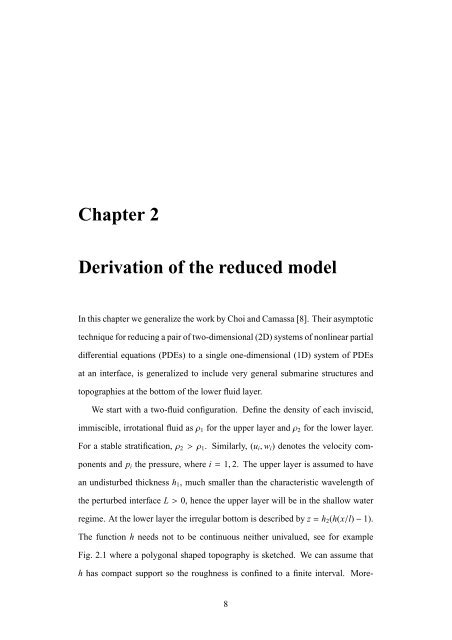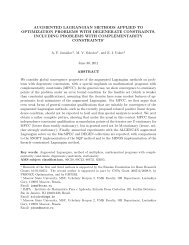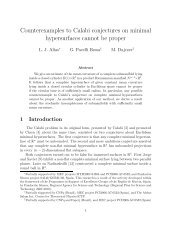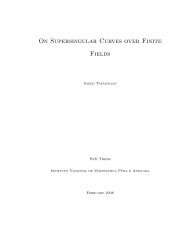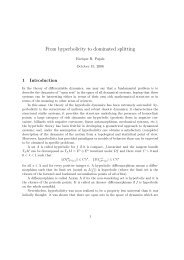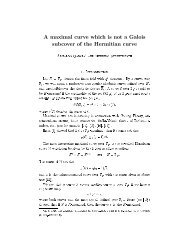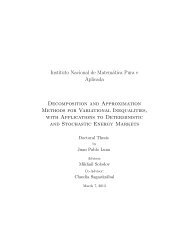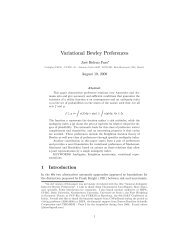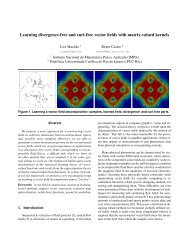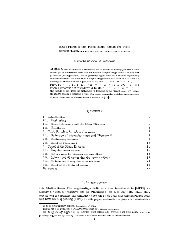a reduced model for internal waves interacting with submarine ...
a reduced model for internal waves interacting with submarine ...
a reduced model for internal waves interacting with submarine ...
You also want an ePaper? Increase the reach of your titles
YUMPU automatically turns print PDFs into web optimized ePapers that Google loves.
Chapter 2<br />
Derivation of the <strong>reduced</strong> <strong>model</strong><br />
In this chapter we generalize the work by Choi and Camassa [8]. Their asymptotic<br />
technique <strong>for</strong> reducing a pair of two-dimensional (2D) systems of nonlinear partial<br />
differential equations (PDEs) to a single one-dimensional (1D) system of PDEs<br />
at an interface, is generalized to include very general <strong>submarine</strong> structures and<br />
topographies at the bottom of the lower fluid layer.<br />
We start <strong>with</strong> a two-fluid configuration. Define the density of each inviscid,<br />
immiscible, irrotational fluid asρ 1 <strong>for</strong> the upper layer andρ 2 <strong>for</strong> the lower layer.<br />
For a stable stratification,ρ 2 >ρ 1 . Similarly, (u i , w i ) denotes the velocity components<br />
and p i the pressure, where i=1, 2. The upper layer is assumed to have<br />
an undisturbed thickness h 1 , much smaller than the characteristic wavelength of<br />
the perturbed interface L>0, hence the upper layer will be in the shallow water<br />
regime. At the lower layer the irregular bottom is described by z=h 2 (h(x/l)−1).<br />
The function h needs not to be continuous neither univalued, see <strong>for</strong> example<br />
Fig. 2.1 where a polygonal shaped topography is sketched. We can assume that<br />
h has compact support so the roughness is confined to a finite interval. More-<br />
8


